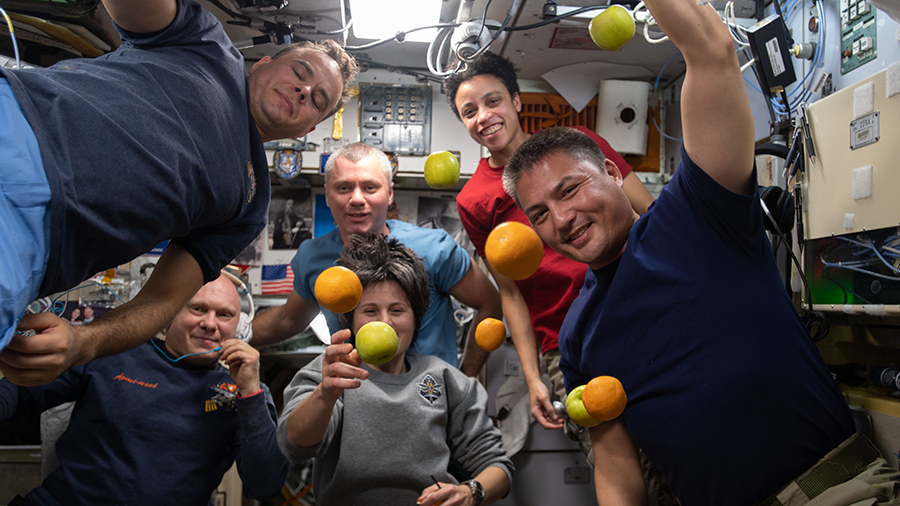Space Gardening, Digestion, and Robotics Top Crew Schedule

Space gardening and the human digestive system were at the top of the science schedule aboard the International Space Station on Wednesday. The seven Expedition 67 residents also worked throughout the day filming their activities, inspecting station hardware, and testing a new robotic arm.
Space agriculture is a way to sustain healthy astronauts on future missions to the Moon, Mars and beyond without relying on packed cargo missions traveling farther in space. The XROOTS experiment on the orbiting lab is exploring growing radishes and mizuna greens using hydroponic and aeroponic techniques. NASA Flight Engineer Bob Hines nourished those plants today and checked seed cartridges and wicks to ensure they germinate and grow.
Hines also inspected and photographed the condition of windows in the Destiny laboratory and the Kibo laboratory modules. NASA Flight Engineer Kjell Lindgren continued testing a headset that enables 3-D high definition holograms in real-time for immersive and innovative communication and research techniques. He also swapped hard drives on a station laptop computer.
Flight Engineers Jessica Watkins and Samantha Cristoforetti joined each other today inspecting and cleaning hatch components on the U.S. modules. Watkins also audited, inspected, and stowed hardware in the Tranquility module and the Quest airlock. Cristoforetti checked smoke detectors in the Columbus laboratory module and tested a specialized garment that can monitor an astronaut’s health wirelessly.
All four astronauts have also been filming their activities this week to prepare future crews training for upcoming station missions. The quartet have been recording, narrating, and downlinking videos documenting the operation of exercise equipment, network communications gear, and cargo stowage aboard the space station.
The lack of gravity affects the human body in a multitude of ways. Scientists observe station crew members during long-term missions to understand and counteract the undesired effects of weightlessness. Commander Oleg Artemyev and Flight Engineer Denis Matveev once again scanned their digestive system using an ultrasound device after breakfast. Researchers are exploring how organs and vessels in the gastrointestinal tract adapt to spaceflight.
Robotics testing is still ongoing this week in the station’s Russian segment. Roscosmos Flight Engineer Sergey Korsakov continued checking out and filming the European robotic arm, the station’s third and newest robotic manipulator, and its ability to maneuver on the Nauka multipurpose laboratory module.
NASA and Northrop Grumman are continuing to work on a plan for Cygnus to try another reboost attempt as early as Saturday, June 25, that would lead to Cygnus potentially departing the station next Tuesday, June 28. The plan is being discussed with the International Space Station partners this week and a forward plan is expected as early as Thursday.
The reboost is designed to provide Cygnus with an enhanced capability for station operations as a standard service for NASA.
from Space Station https://ift.tt/BgNWtPF
Comments
Post a Comment